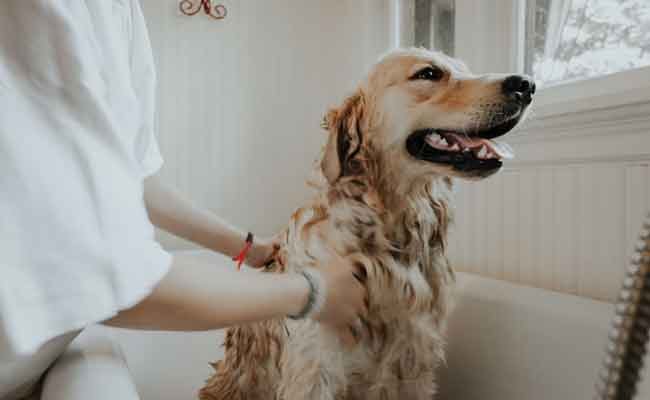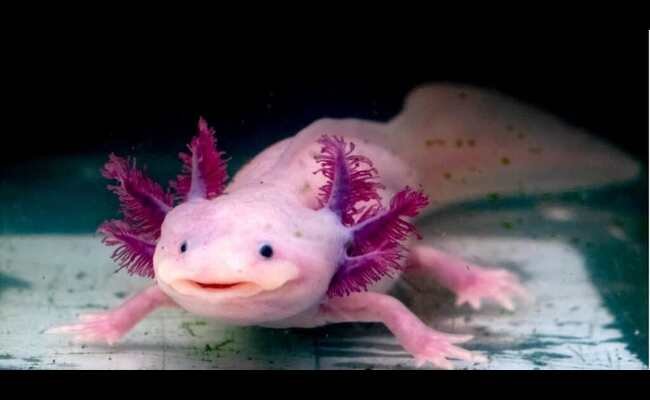
Why Dog Grooming Is important Best Info 2023
February 4, 2023
The Principles of Effective Logo Design 2023 Best Info
August 10, 2023Hello friends, how are you all? Today we will discuss How To Take Care Of Axolotl As Pet 2023 Best Info. Axolotls are adorable little animals often kept as pets by people who like aquatic or exotic pets. Axolotls, sometimes called “Mexican walking fish,” are neotenic Salamanders and not fish at all. This means they stay like young fish in water their whole lives, keeping their feathery gills on the outside. However, they can still get big, reach sexual maturity, and have babies.
Axolotls in the wild are brown or tan with gold spots all over their bodies. But mutations in their genes have led to different color morphs, such as albino, golden albino, leucistic, xanthic, and melanistic. Selective breeding has led to some of these color morphs crossing in captivity.
Axolotls are known for being able to grow back lost limbs, organs, and even their heart and brain. This has led to many scientific studies on them. Even more impressive, their genome is 10 times bigger than a human’s, making it the biggest ever found in an animal.

Axolotls come from Lakes Xochimilco and Chalco, the largest freshwater lakes in the Valley of Mexico. But as nearby Mexico City has grown, it has endangered wild Axolotl populations and their habitats. Lake Chalco no longer exists, and Lake Xochimilco is now just a network of canals.
Due to the destruction of their habitat and the introduction of non-native predators, their wild populations have been decimated and are now close to extinction. Because of the pet trade, the species is still alive and well in captivity, but they will likely be declared extinct in the wild shortly if nothing is done.
Our care sheet for Axolotls will discuss the best tank size, tankmates, temperature, lighting, water parameters, diet, and more. This will give you everything you need to get started with your new Axolotl habitat.
How To Take Care Of Axolotl As Pet 2023 Best Info
The Axolotl’s Home And Its Tank Mates
Axolotls usually grow between 20 and 30 cm (8 to 12 inches) long, but some are up to 45 cm (18 inches) long. So, even though Axolotls aren’t very active as pets, they need a large enclosure, especially if they live with other Axolotls.
The size of an Axolotl tank should be more important than how much water it can hold. We suggest a 90cm (3ft) aquarium for a single adult or a 120cm (4ft) aquarium for a pair of fully grown adult Axolotls. Young Axolotls can live in a 60cm (2ft) aquarium, but they will need a bigger one when they get bigger.
A new Axolotl tank should be set up like a new aquarium for fish. It should be cycled with ammonia for 6 to 8 weeks before you add your new Axolotl. You should test the water every few days until the ammonia and nitrites stay at 0ppm and you start to see nitrates. This means that your filter is fully cycled and has been taken over by good bacteria that break down nitrites.
Lighting, Temperature, And Water Flow In An Axolotl Tank
Unlike many amphibians living on land, Axolotls don’t need special lighting. A regular aquarium light will work to give them a day/night cycle, but they don’t like too much light, so it’s best to keep it in a lower setting.
The best water temperature for an aquarium with an Axolotl is between 15 and 18°C (59 and 64°F). This means that most of the time, no heater is needed. Most aquariums come as a complete set that includes a heater. If this is the case, you should keep the heater if a sudden temperature drop makes the water cooler than it should be.
Axolotls are very sensitive to bad water and can be pretty messy as pets. Good filtration in your Axolotl tank is crucial to caring for your Axolotl.
Again, most aquariums are sold as kits, and they come with either a drip filter system or their own internal or external filter already sized for the amount of water in the tank. It is important to keep the water flow steady and not too high because Axolotls don’t like strong water flow.
Axolotl Water Parameters
Axolotls need a pH between 6 and 8, which means that a neutral pH is best. Chlorine, chloramine, and ammonia should stay at 0 ppm, and nitrates should ideally stay at or below 10 ppm. The overall hardness should stay between 7 and 14GH, and the hardness of carbonate should be between 3 and 8KH.
This means that most of the time, tap water can be used for water changes. However, treating all tap water with an Aloe vera-free de-chlorinator is important to get rid of chlorine and chloramines, which can harm your Axolotl’s skin because it is so porous and will also kill the good bacteria in your filter.
Axolotl Substrate
Substrates are a bit of a grey area when it comes to Axolotls. They don’t have the best vision and often eat substrate when they are eating, which can be dangerous if the particles are too big to pass. This means that substrate shouldn’t be used at all or only fine-grained sand that’s easy to get through.
A tank with no bottom will be easier to clean but also look less nice. On the other hand, a tank with fine sand as the bottom can be aquascaped and planted with live plants to make a more attractive display.
Axolotl Tank Decoration
Axolotls don’t need a lot of decorations in their tanks, but they do need places to hide. You should give your Axolotl a few caves along the length of the aquarium and at least a few live or fake plants to hide behind (the more cover, the better). It is important to choose broadleaf plants because plants with fine, spindly leaves can get caught in an Axolotl’s gills.
Axolotl Diet And Food That Wasn’t Eaten
Axolotls eat mostly meat, so they are carnivores. Their eyesight isn’t great, but they have a good sense of smell. They should eat various foods like Axolotl pellets, large earthworms, bloodworms, and frozen fish foods like cockles and mussels sold in stores. It’s important to eliminate any food that isn’t eaten right away because if it stays in for too long, it can hurt your water parameters.
Axolotl Breeding
It’s not hard to breed Axolotls, but it’s still important to be careful when breeding any animal. There are a lot of animals with bad genes on the exotic pet market because they were bred by beginners from animals with genetic problems. Because of this, we advise against breeding unless you have much experience and your animals are in good health.
Before you can breed Axolotls, you must know how to sex them. Male Axolotls have a large, swollen cloaca, the opening between the end of their body and the beginning of their tail. Female Axolotls, on the other hand, have cloacas that are flat and not very noticeable.
Most Axolotls are sexually mature by the time they are 12 months old, but it is best to wait until they are 18 months old and fully grown before trying to breed them. This is so that the smaller bodies of younger Axolotls don’t get too stressed out.
In the wild, Axolotls breed when the seasons change from winter to spring. To get them to breed in captivity, you should do a partial water change with water that is colder than what is already in the tank. This will mimic the natural seasonal changes and get them in the mood. After you do this, your Axolotls should be able to have babies easily.
The male will try to attract the female, and if she is interested, he will drop sperm sacs (called spermatophores) on a surface, where the female will pick them up and use them to fertilize the eggs she is carrying.
In the next one to three days, the female will lay 1,500 fertilized eggs all over the aquarium, usually on plants or decorations. If you see these, you should get rid of them immediately because the parent will likely eat the eggs if you don’t. Put the newly laid eggs in a holding tank with the same conditions as the adult tank and wait. If you keep eggs at the warmer end of the range, they will hatch a little faster than if you keep them at the cooler end.
Care for hatchlings is like care for adults but on a smaller scale. Keep the water conditions the same and give them small live foods like Daphnia or Brine prawns for their first meal. Hatchling Axolotls like to eat each other, so make sure you give them a lot of food often, preferably twice a day.
Once they grow legs, you can treat them like an adult Axolotl. They should be happy to eat non-living foods and less likely to eat their siblings.
Other Kinds Of Animals
The Axolotl is a unique animal and an even more unique pet. This means that there are no close alternatives to Axolotls, and it all comes down to what you liked about them in the first place.
If it was because they were aquatic, a Budgett’s frog, an African dwarf frog, or a community aquarium might be a good choice.
If you were interested in them because of how they looked, you might also be interested in the terrestrial Fire salamander. If you want to buy Axolotl as a pet, you can buy from The Mottled Lotl.
Axolotl Cares At A Glance.
The Axolotl is also known as the Mexican walking fish and the Mexican salamander.
- Ambystoma mexicanum is its scientific name.
- Mexico is a country.
- Raised in captivity:
- Adult size: 20-30cm
- Freshwater lakes are their natural home.
- 90cm or 90L aquariums are used as homes.
- Ideal temperature: 15-18°C (59-64°C)
- UVI: N/A
- The pH of water is between 6 and 8.
- Diet: Carnivorous
- On average, people live between 10 and 15 years.
- Character: obedient
- Handling: It shouldn’t be easy to handle.
- Cohabitable: Yes
Shopping List For An Axolotl
Care sheet for an axolotl to use as a guide
- 90cm aquarium (minimum)
- Aquarium filter
- Aquarium light
- Thermometer for water
- Cycling with ammonia
- Water de-chlorinator (Aloe vera-free)
- The sand base (if using)
- Hides and furniture
- Food
